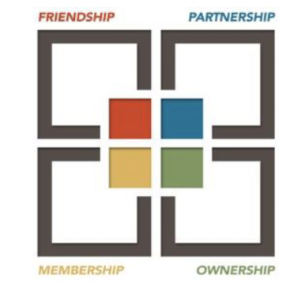I heard my daughter speaking with my wife the other day. My wife is always busy, so most conversations happen on speaker phone. My daughter, a young, successful twenty-something, was telling my wife she was adjusting her intake of online content, social media, etc. She was doing it for “her own mental health”, recognizing that she needs some downtime to unplug, rest her mind, and tend to her own well-being. This caught my attention for a couple reasons. One, the fact that a young person in their twenties felt the need to find solace, quiet their mind and interactions, and unplug. Two, the inherent awareness necessary to make this assessment and act on it by someone in their twenties.
When I was in my twenties, it seemed like it was all about stimulation, socialization, and adding as much excitement and interaction as I could. Rec leagues, bar hopping, and connecting with friends and family on excursions was what we lived for outside of work. We “seeked” stimulation. We got informed about what was going on through the radio, a nightly news cast, or word of mouth (we got invited). The radio played the same news over and over, so one cycle of 15-20 minutes and you were caught up. Same with the news…..30 minutes a night. We looked for stimulation because each day was filled with times of quiet, solace, and peace…to the point of boredom.
Not today. Today we are bombarded with as much stimulation, interruption, over-communication, and downright invasive messaging as we can stand….and more. I believe my generation…the fifty-somethings, have a unique and many times more difficult struggle than the generations that follow us. Technology began to explode in my thirties with the internet (Thanks Al). The 24-hour news cycle, which started in the 80’s, grew along with it. Social media joined the onslaught in the early 2000’s. This technological evolution happened to me, for the most part, at the end of my twenties. It has been a constant struggle to learn, keep up with, and effectively utilize all the technological advances our culture has experienced.
Not so for my children. My wife and I monitored and curbed their interaction with the “stimulation super-highway” until their mid to late teenage years. After that, it has become more of a self-policing endeavor, with my wife and I staying connected, eyes open, trying to stay in touch with where they are at and how they are doing. They, on the other hand, have developed skills and awareness that most of my generation will struggle with for the rest of our lives.
They adapt to news technology, aps, and uses with ease. They can engage in just the media they want, instead of experiencing the troubling feeling of FOMO (Fear Of Missing Out). They easily flow in and out of online content, aps, and daily business without a struggle. They identify when they are being over-stimulated (which I feel is all the time…they feel differently) and make plans to unplug and temper their uses. I know young parents who easily work out schedules for their child’s use of technology, online stimulation, and development and stick to those schedules. Indeed, the next generation will handle technology better than we have, but how do they balance that stimulation over time? How do they avoid having to “take a break” from receiving information and stimulation? It’s almost as if the increased connectivity has created a greater need for isolation. This is very interesting, as feelings of loneliness and isolation have increased with social media usage among 19–32-year-old users, according to a recent Forbes article.
This is opposite for seniors, who are more connected to their families and friends through aps like Zoom, Facetime, and Facebook. My family felt the pain of distance in the 80-90’s, living in all 4 corners of the US. As I get older, I know that being able to both SEE and TALK to my kids and grandkids whenever I want will be a huge advantage that my parents did not have. They had to settle for a phone call, a letter, or a holiday visit once or twice a year, for decades.
Although use across generations can vary, I believe it’s all about the content. Human beings can handle much more interaction when that interaction is positive as opposed to negative. This has been a tremendous challenge the past few years. Technology is here to stay. Popularity of an ap or platform is directly related to how much people engage in it. It’s our choice as to how much we engage or not, and what we engage in, that greatly affects our well-being.
While technology can give a senior a look at their children and grandchildren, connect young professionals for business ventures, and give us a view into our heroes and superstars thoughts and lives, it cannot… and will not…ever…replace the feeling of a handshake, a hug, or empathetic eyes of a close friend. If we focus on crisis, debate, and disagreement, technology can portray a life of discord, hopelessness, and divide. This applies to both young and old alike. We would all be wise to ensure that we are maintaining a vibrant life in person with others, focusing on the positive, and making sure that we are utilizing all the technological advances of the last generation as tools to improve quality of life, not hamper it.






